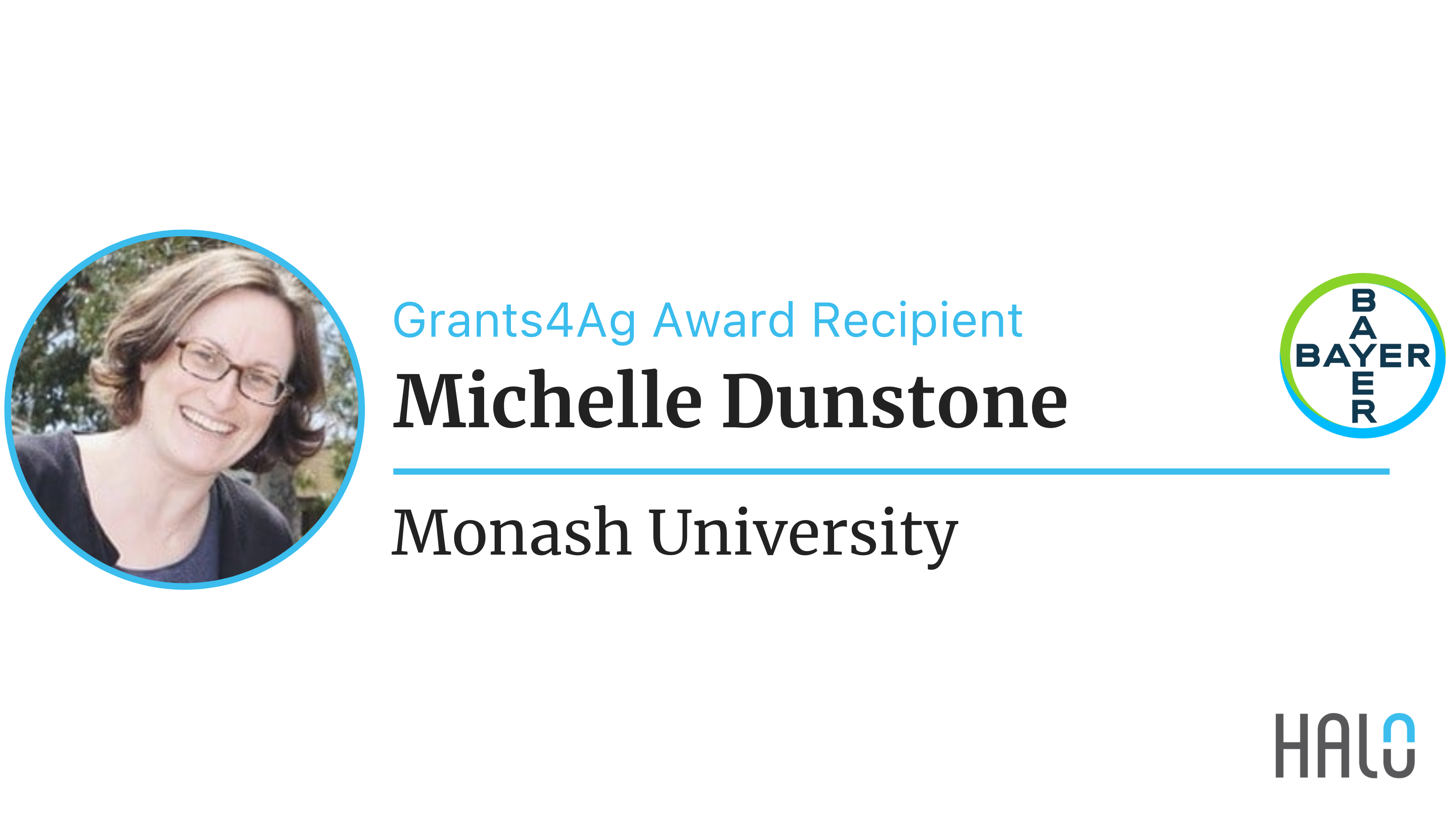Biopesticides are gaining increasing attention as sustainable alternatives to traditional pesticides. Prof. Michelle Dunstone is studying the structural biology of pore-forming proteins and their potential use against pests. View Halo Profile >>
Tell us about your research.
My research focuses on the molecular mechanism of pore-forming proteins and their application in agriculture and nanotechnology. I study pore-forming proteins at the molecular level over both space and time. Firstly, I use structural biology techniques to understand where every atom in the protein is and how this relates to function of the protein. Secondly, I am starting to use time-resolved techniques to understand how the protein changes shape to punch a hole in the target cell. This information is vital for understanding the mode of action for pore-forming proteins in its application in agriculture.
Pore-forming proteins are better explained as hole-punching proteins. These are water-soluble monomers that, when they find the right target cell, come together in a ring-shape and punch into the cell surface.
Can you explain that to a non-scientist?
Pore-forming proteins are better explained as hole-punching proteins. These are water-soluble monomers that, when they find the right target cell, come together in a ring-shape and punch into the cell surface. A bit like a molecular hole-puncher. This hole can act to either kill the cell or allow toxic agents to enter the cell. These hole-punching proteins are used by our immune system to defend against bacteria and by bacteria to cause disease. These proteins are also used by bacteria to kill insect larvae that digest the bacteria.
Why did you choose this area of research?
I am fascinated by pore-forming proteins as they undergo an amazing series of conformational changes in their structure to be able to go from soluble monomeric form to a membrane-embedded pore. This is a fascinating property of this class of protein. I am specifically using structural biology techniques such as x-ray crystallography and cryo-electron microscopy to look at the static structures of these proteins. I am also starting to look at how these proteins change shape over time using time-resolved experiments. I am also fascinated about how the same class of mechanisms has evolved independently many times over. Basically, I am fascinated by all pore-forming proteins and hope to understand how each one works one day and to apply this to many different applications.
These PFPs are of value as biopesticides as they reduce the requirement for chemical pesticides that can lead to pollution and reduced crop profit.
How could your Grants4Ag project someday impact #healthforall #hungerfornone?
PFPs are hole-punching proteins that are already in use to protect crops from being eaten by insect larvae. These PFPs are of value as biopesticides as they reduce the requirement for chemical pesticides that can lead to pollution and reduced crop profit. However, a problem in the agriculture industry is that many of the target pest insects are evolving resistance to currently approved bioinsecticides. Therefore, there is an ongoing need to identify more pore-forming proteins that can be used as bioinsecticides. Furthermore, my deep understanding of the structure and mechanism of pore formation may yield strategies to circumvent the ability of insects to evolve resistance at all.


